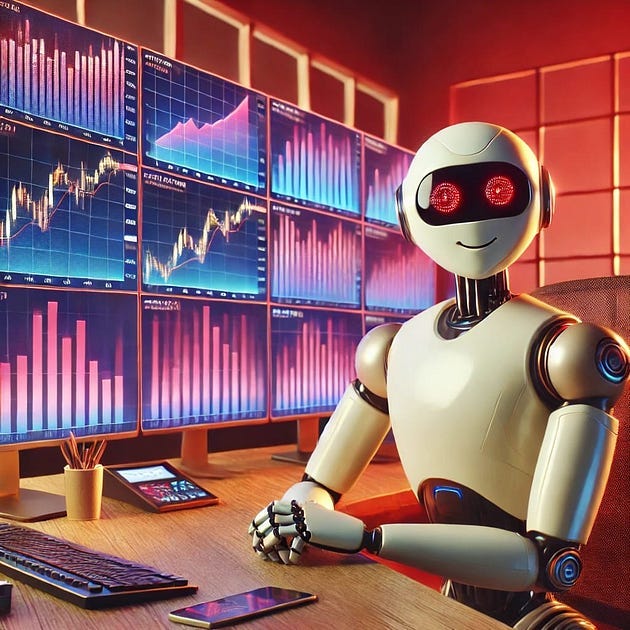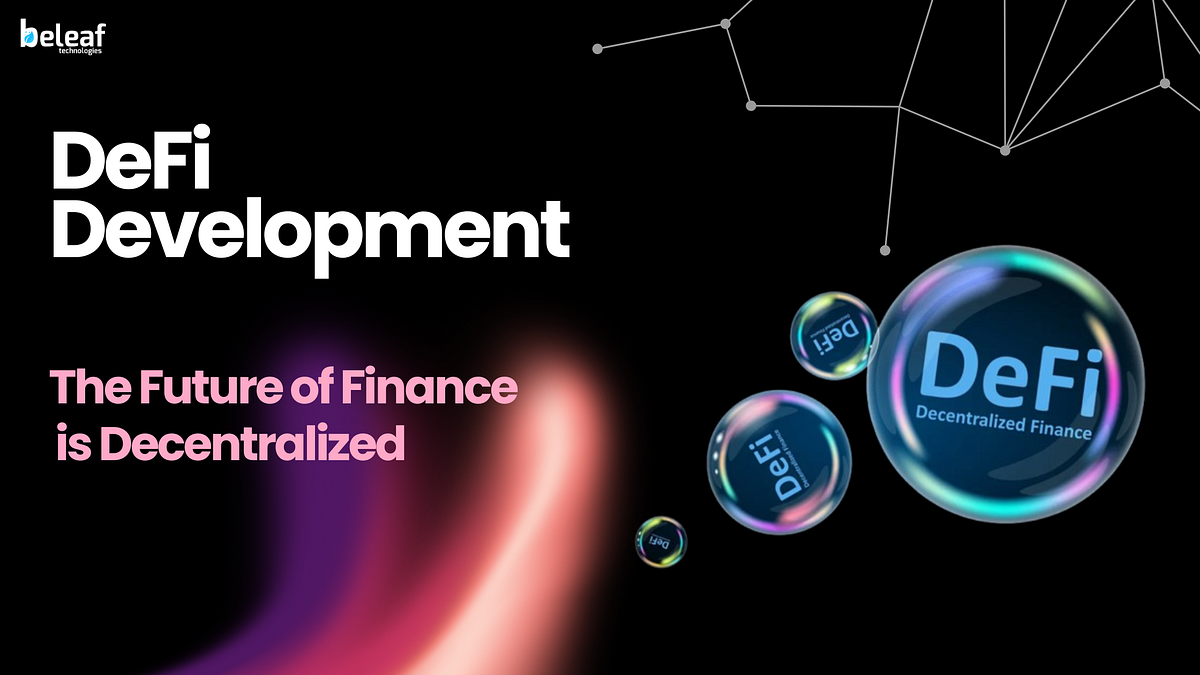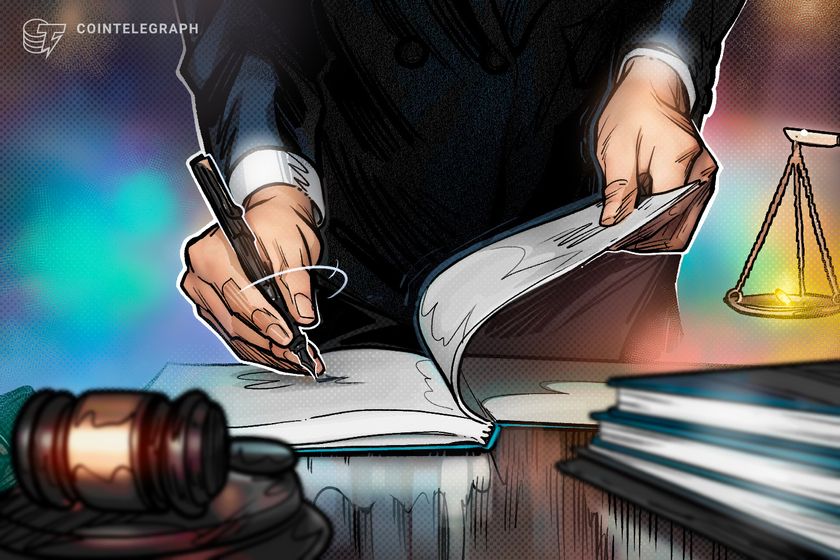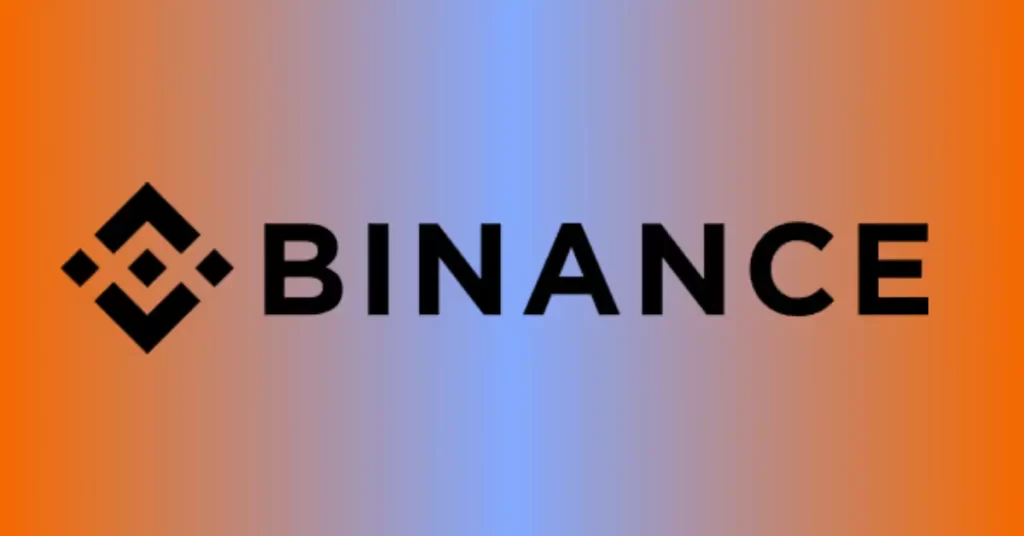Ready for the future of trading? Learn how AI agents are leading the change.

Artificial Intelligence (AI) has transformed the way we understand and operate in the modern world. Things are no longer the same, and every day, we see how interaction with AI is becoming part of our daily lives. Some examples of how we interact with AI on a regular basis include the following:
The use of tools like Siri (Apple), Alexa (Amazon), and Google Assistant to answer questions, manage calendars, and control smart devices.Platforms like Netflix, Spotify, or YouTube suggest personalized content based on your preferences and previous behavior.Google Search algorithms that use AI to display relevant results based on your searches.Navigation apps like Google Maps and Waze leverage AI to suggest faster routes and predict arrival times based on real-time traffic.Facial recognition technology used in devices like iPhones (Face ID) or smart security cameras to identify users or unlock devices.Do you see it now? Artificial Intelligence is here to stay. Today, more than ever, it is advancing at a rapid pace. We no longer settle for the basic examples mentioned above when discussing AI in general. Now, we demand more. Companies worldwide are tirelessly working to take this technology to the next level. Among the most popular tools in today’s market are AI agents, which are revolutionizing various industries and transforming how we interact with technology.
What is an AI Agent?
An AI agent is defined as an autonomous system that uses advanced algorithms to analyze data, learn from its environment, and make decisions without direct human intervention. Some of the characteristics shared by most of these agents are as follows:
1. Autonomy: The ability to operate and make decisions independently without constant human intervention.
2. Adaptability: The capacity to adjust to new conditions and environments, learning and optimizing performance over time.
3. Data Processing: The ability to analyze large volumes of data in real-time and extract useful information to achieve its objectives.
4. Decision-Making: The ability to evaluate various options and select the most suitable one based on predefined conditions and goals.
5. Machine Learning: The use of mathematical models and algorithms that allow them to improve their performance by learning from experience and processed data.
6. Interaction with the Environment: The ability to interact with their physical or digital environment to collect information, process it, and act accordingly.
7. Speed and Precision: The capability to perform complex tasks quickly and accurately, reducing human errors.
8. Specialization: While some agents can be generalists, most specialize in specific tasks such as financial analysis, content generation, and customer service, among others.
9. Communication and Collaboration: The ability to interact with other agents, systems, or humans using natural language, graphical interfaces, or programmatic systems.
10. Defined Purpose: They operate around a clearly defined purpose or task, such as solving problems, optimizing processes, or automating tasks.
This technological advancement represents one of the greatest innovations of the 21st century, offering unprecedented opportunities to enhance productivity, reduce costs, and transform industries as we know them. AI agents are no longer just a vision of the future — they are a reality that is reshaping how we interact with technology in our daily lives. And this is just the beginning.
What Are AI Agents Used For?
Most artificial intelligence agents operate within a specific niche, meaning they are designed to fulfill a distinct “objective” or “specific task.” These tasks can include acting as virtual assistants (like Alexa or Siri), digital influencers (like Lil Miquela), generative artists (such as DALL·E models creating visual art), or even financial analysts (like trading bots that optimize investment strategies in real-time). Other notable examples include customer support agents (such as chatbots from companies like Zendesk) and logistics managers (like UPS’s ORION, which optimizes delivery routes).
Regardless of their task, these agents share key characteristics: they analyze large volumes of data in real-time, automate repetitive tasks, and adapt to their environment and user preferences. This capability results in significant reductions in operational costs and time, making them indispensable tools across multiple industries.
A practical and straightforward example would be:
Imagine an AI agent implemented in an e-commerce business: this agent can analyze thousands of customer inquiries in real-time, identify common patterns (like questions about product availability), and automatically respond to those inquiries. By doing so, the agent reduces the workload of the human support team, saving time and lowering operational costs.
Objective of This Article
This article aims to provide a friendly yet comprehensive explanation of what AI agents are and how they are transforming trading today.
AI Agents in Trading: Everything You Need to Know
What Are AI Agents in Trading?
AI agents in trading are advanced programs designed to analyze financial market data, identify investment opportunities, and autonomously execute buy and sell operations in real-time. Unlike human traders, these agents can process vast amounts of data instantaneously, enabling them to detect patterns, trends, and market signals with a level of speed and precision unattainable by humans.
Their primary objective is to automate and optimize the trading process, meaning they can operate 24/7, react quickly to market changes, and adjust their strategies in real-time — all without human intervention.
How Do They Automate Buy and Sell Operations?
AI agents in trading leverage advanced machine learning models and real-time data processing to execute the following key tasks:
1. Market Data Analysis: Agents collect and analyze historical and real-time data, including prices, transaction volumes, financial news, and social media activity.
2. Pattern Recognition: Using tools like neural networks, agents detect recurring patterns in market movements, allowing them to predict trends and price fluctuations.
3. Decision-Making: Based on predictive analytics, agents determine when to buy or sell an asset to maximize profits or minimize losses.
4. Trade Execution: Once an opportunity is identified, the agent automatically executes buy or sell orders on trading platforms.
5. Continuous Optimization: Agents learn from the outcomes of their actions, adjusting their strategies to improve future performance through machine learning capabilities.
A Practical Example
An AI agent can monitor thousands of cryptocurrency pairs in real-time. If it detects that a currency is being oversold or that breaking news is affecting its price, the agent can quickly purchase the currency before its value increases, thereby maximizing profits for the user.
Key Differences Between Traditional Agents and Advanced AI Agents
The impact of these tools on the financial market is undeniable. While traditional agents provide basic solutions to automate repetitive tasks, advanced AI agents are revolutionizing trading by offering:
More Accurate Decisions: Thanks to their ability to perform deep and comprehensive analyses.
Faster Reaction Times: Operating within milliseconds, they can instantly seize opportunities.
Reduced Human Errors: Minimizing decisions driven by emotions or biases, which are significant challenges for human traders.
These advancements are not only transforming how traders operate but also democratizing access to automated trading. This shift makes advanced trading tools available to individual traders, not just large institutions.
Key Functions in Trading
1. Predictive Analysis: Leveraging machine learning to anticipate market movements and identify profitable trends.2. Strategy Automation: Automatically executing buy and sell orders based on pre-defined rules and conditions.3. Risk Management: Detecting patterns that indicate potential losses and adjusting strategies in real-time to mitigate risks.4. Cost Optimization: Identifying the most efficient trading routes to minimize fees and overall costs.By integrating these capabilities, advanced AI agents are shaping a more efficient, accessible, and dynamic trading landscape for both seasoned and novice traders.
Types of Agents in Trading
1. Agents Based on Basic Algorithms (Traditional)
Description: These agents execute trades following predefined rules (such as moving averages or support and resistance levels). Their primary limitation is the lack of learning or adaptability capabilities.Example: A bot that automatically buys when the price crosses an upward-moving average.2. Machine Learning Agents
Description: These agents use machine learning models to analyze historical and real-time data, adjusting their strategies over time. They learn market patterns and trends, continuously optimizing their decisions.Example: Bots that predict the volatility of a cryptocurrency based on historical patterns and recent data.3. Sentiment Analysis Agents
Description: Using Natural Language Processing (NLP), these agents interpret news, social media, and forums to evaluate market sentiment. They can detect unexpected events or rapid changes in market perception.Example: An agent that analyzes a negative tweet about Bitcoin and sells before the price drops.4. High-Frequency Trading (HFT) Agents
Description: These agents execute thousands of trades within milliseconds to exploit small price discrepancies. Their primary use is capturing opportunities in highly liquid markets, such as popular cryptocurrency pairs.Example: A bot performing arbitrage between different exchanges to take advantage of minor price differences.5. Multi-Strategy Agents
Description: These agents combine various trading techniques, such as arbitrage, technical analysis, and machine learning, into a single solution. They offer flexibility to adapt to different market conditions.Example: An agent that engages in trend trading during volatile markets but switches to arbitrage strategies in stable markets.6. Reinforcement Learning Agents
Description: These agents learn through trial and error, optimizing their decisions to maximize specific rewards. They can adapt to new situations and dynamic environments.Example: An agent that learns to trade during unpredictable events, such as sudden regulatory changes.7. Blockchain-Based and DeFi Agents
Description: These agents are designed to operate exclusively on decentralized platforms (DEX) and within DeFi ecosystems. They use smart contracts to interact directly with DeFi protocols.Example: Bots that capitalize on yield farming opportunities or liquidation events within DeFi protocols.Benefits of AI Agents in Trading
1. Speed and Precision
One of the greatest attributes of AI agents is their ability to execute trades in fractions of a second. This allows them to capitalize on market opportunities instantly, something that would be impossible for humans.Practical example: An AI agent can detect a sudden change in the price of a cryptocurrency and execute a purchase before the market adjusts to the new price.2. Data-Driven Decisions, Not Emotions
Unlike human traders, AI agents eliminate emotional factors from their decision-making processes. They base their actions solely on data analysis, reducing errors caused by fear, greed, or overconfidence.Practical example: During a market downturn, an AI agent can identify strategic buying opportunities based on data, whereas a human trader might panic and decide to sell.3. Scalability Across Multiple Markets
AI agents have the unique ability to operate simultaneously across multiple markets and manage various assets. This capability maximizes opportunities and diversifies risks effectively.Practical example: An AI agent can analyze cryptocurrency, forex, and stock markets in real-time. While identifying arbitrage opportunities in cryptocurrencies, it also executes trading strategies in forex and monitors stocks for potential buys.These benefits — speed, precision, objective decision-making, and scalability — make AI agents indispensable tools for modern traders aiming to optimize their operations and remain competitive in dynamic markets.

Challenges of Artificial Intelligence Agents in Trading
Although these agents are powerful tools, understanding and managing their challenges is crucial to maximizing their effectiveness and minimizing risks. Below are the main challenges:
1. Security and Vulnerabilities
AI agents operate on digital platforms, making them susceptible to cyberattacks. Hackers may attempt to compromise their functionality or gain access to confidential information.Example: A cyberattack on a trading bot could manipulate its decisions, resulting in significant financial losses for the user.2. Technological Dependence
These systems rely entirely on algorithms and robust technological infrastructure. An error in the algorithms or internet connection failures can disrupt critical operations, causing unexpected losses.Example: If an AI agent malfunctions during a period of high market volatility, the trader could miss a key opportunity or face unnecessary risks.3. Restrictions and Regulations
The use of trading bots is subject to regulations in many countries. Some jurisdictions impose legal restrictions or completely prohibit their use to prevent unfair practices or market manipulation.Example: In certain markets, laws may require traders to register their bots or limit automated operations.Beginner’s Guide: How to Start Using AI Agents in Trading
1. Understand What an AI Trading Agent Is
Before using a bot, it’s essential to understand how it works. AI trading agents are automated programs that analyze market data, detect patterns, and execute buy and sell orders autonomously.
2. Define Your Objectives
Key question: What do you hope to achieve with the AI agent?
Decide whether to use it for:
Day Trading: Buying and selling assets quickly to take advantage of small price fluctuations.Long-Term Investments: Automating operations based on market trends.Specific Strategies: Such as arbitrage or trading based on technical indicators.3. Study Basic Trading Strategies
Although bots automate processes, it’s vital to understand concepts such as:
Stop-Loss and Take-Profit: To limit losses or secure profits.Technical and Fundamental Analysis: Bots often base decisions on these approaches.Risk Management: Define how much you’re willing to lose per trade.4. Choose a Reliable Platform
Look for platforms that allow you to integrate trading bots, and ensure that they:
Comply with local regulations.Offer technical support in case of issues.Provide tools compatible with AI agents.5. Configure Your AI Agent
Follow these basic steps:A. Connect Your Trading Account: Typically done via an API (Application Programming Interface).B. Set Your Parameters: Define assets, risk levels, budget, and the strategy the bot will follow.C. Test in a Simulated Environment: Use demo accounts to test how the bot operates without risking real money.6. Monitor Performance
Although bots are autonomous, it’s crucial to monitor their activity regularly, check:
Profits and losses.Trades executed.Adjustments needed based on market conditions.7. Learn from Experience
Not all strategies will be successful from the start, evaluate:
What works and what doesn’t.How you can optimize the bot’s configuration.Software updates and improvements to maintain its effectiveness.By following these steps, you can leverage AI agents as efficient tools for navigating the complexities of this kind of trading!
Conclusion
In this article, we have explored how artificial intelligence (AI) agents are transforming the world of trading, from their ability to analyze data and execute trades with millisecond precision to challenges such as security, technological dependence, and regulations. These agents represent a significant evolution in the way financial markets operate, enabling the automation of repetitive tasks and decision-making based on data rather than emotions.
Artificial intelligence has made advanced trading tools, once reserved for large financial institutions, accessible to individual traders. This democratizes market access, providing equal opportunities to compete in a global environment. Furthermore, its ability to optimize resources and minimize human error positions AI as an indispensable ally in building modern investment strategies.
The potential of AI agents in trading is just beginning. Every day, new applications and improvements emerge, expanding the possibilities of this technology in financial markets. Trading is no longer exclusive to experts or large corporations; with AI agents, anyone can access advanced strategies and participate in the exciting world of financial markets.
If you’re interested in trading topics, I invite you to follow my channel: I publish articles every week on the most important and current topics in the decentralized finance ecosystem. Join our community!
AI Agents: Everything You Need to Know was originally published in The Capital on Medium, where people are continuing the conversation by highlighting and responding to this story.

 3 days ago
26
3 days ago
26








 English (US) ·
English (US) ·